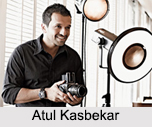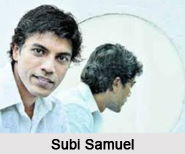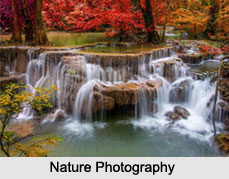 "If you can shoot food, you can shoot anything."
"If you can shoot food, you can shoot anything."
Food photography, considered as the most difficult specialization in photography, is a recent concept with the emerging need for eating out in good restaurants, has become the realm of a handful of photography professionals armed with high-end, medium-format cameras and a ton of expensive studio gear, and flanked by a small army of dedicated chefs and food stylists. Termed as a niche profession, for an amateur or a casual shooter, food photography would seem to be a nerve-racking and daunting task at hand. The digital age has made food photography simpler. Set up and preparation takes away most of the time in food photography. So this is where the digital cameras come handy where one knows which shot is most suitable and better than the rest.
One can see food photographers` work in advertisements, cookbooks and high-end glossy magazines. Food photographers` work for food manufactures, hotels and restaurants, exporters, dairy and ice-cream companies. Photographs are shot either in a studio with an attached kitchen or in hotels for exclusive shots.
Food photography is for people who love food with the love for shooting. The photograph should be able to enhance the five senses, which are enhanced by the actual food on your platter. The color, texture, smell and flavor should be portrayed in the picture as to make you want to devour the one in front of you! The very first step to creating universally appealing images of food is to have a passion for the subject. Since it is difficult to enhance taste and smell with just a photograph, photographers are left with two attributes: color and texture. A good photographer knows what to focus on, what props and styling is to be used and the backdrops, lighting and other environmental factors, which go hand in hand with food photography. Good props can make or break an image in food photography; therefore careful analysis and even more careful selection of props have to be made. One should know what colors you`ll have to work with, and buy plates, tablecloths, napkins, and silverware to complement and contrast those colors. One has to be fast enough to capture the essence of food, as food gets stale with time. Just like ice creams, which would melt if the photographer were not quick enough. Within 1-3 minutes after putting a beautiful plate on a table to shoot, whip cream runs, wet food dries, fried food becomes greasy, ice cream melts, and steaming food doesn`t. Sometimes you only have time to get off 2-3 shots before the food is no longer at its photographic best. Being well prepared really helps, and having a helper or the chef there to plate and dress is invaluable.
There is a law in the U.S.A. regarding truth in advertising. It requires that advertisements about food show the actual food item that a consumer would be able to buy and eat. However, the food surrounding the item being advertised can be artificial, and food used to illustrate cookbooks or magazine articles can be bogus as well. It is often easier to work with imitation food than with the real thing.














